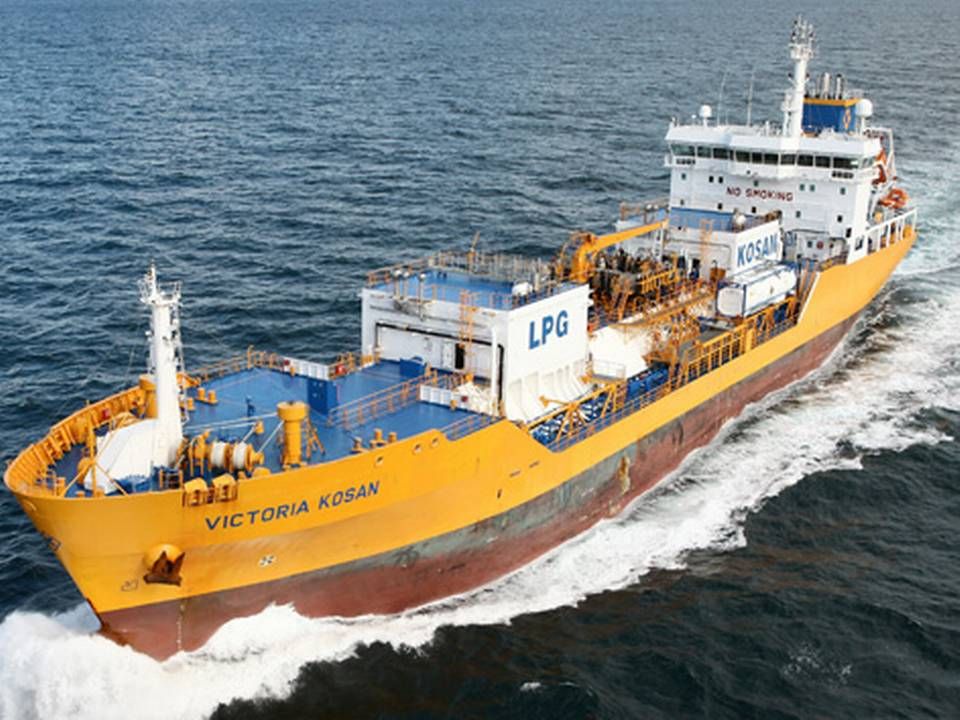Zacho tackles tough second year with J. Lauritzen

J. Lauritzen CEO Mads Zacho does not come off much different than the rest of the carrier's 140 employees at the office in northern Copenhagen. He either stands or sits by his desk on the floor of the building which makes up the HQ for the bulk carrier as well as gas carrier Kosan.
Sitting among the rest of the staff was a decision Zacho made to feel in the midst of where the action is.
And this was just one decision of many that he was forced to make quickly when taking on his new position exactly one year ago, when he was appointed to succeed Jan Kastrup Nielsen, to the surprise of some observers.
For banks to allow a refinancing, the bondholders had to agree to a new plan, but this agreement was not successfully reached. For this reason, Lauritzen Fonden stepped in yet again to pay out bondholders prematurely. However, this cost the fund an investment of USD 80 million.
No time for relief
Afterward, Zacho will be able to check the first task off his to-do list, of securing financing of the carrier for at least a few years. But the time has not yet come to breath a sigh of relief, as he can now direct attention to the main focus of the job: Turning J. Lauritzen into a carrier that once again can make a profit.
On the one hand, there is some cause for optimism as the dry bulk index has been growing since the summer and rose on Thursday Oct. 12 by 1.7 percent to 1,458 points.
On the other hand, this is not enough to fulfill the owner's desire for bottom line profits, that are necessary to repay some of the huge cash sums that the fund has injected into the carrier over recent years.
With the carrier's focus on Handysizes, the rates for the minor vessel type are what ultimately decide the fate of J. Lauritzen's economy. And with daily rates of USD 9,000, it would still take another USD 2,000-3,000 to reach the point where red numbers can be converted into a black bottom line.
"We have launched several initiatives, which are first meant to reduce costs, and secondly to boost earnings," Zacho tells ShippingWatch, before explaining how the carrier plans to eventually book another profit.
Utilizing information
"We want to recreate profitability and we can actually do a lot in this respect, such as reducing costs. We are working to utilize the information that we get from our own operations much more actively. For example, our new predictable maintenance system, which continuously tells us when the fleet needs hulls cleaned, so that this is done before it starts costing money. We have also become better at managing the crew with the information we receive. These sound like small things but they can save us millions of dollars," says Zacho.
"Digital input such as weather conditions and data about the harvest constitute other digital information that can strengthen work for freighters, so it is easier to choose the right cargo," he adds.
The overall process of trimming down the carrier has been ongoing virtually since Zacho took office as CEO in the late summer of 2016. This led to a round of layoffs at J. Lauritzen, which was unusual for the carrier, and the former head of dry bulk was let go in early 2017. However, the financial report still shows a deficit, according to the most recent half yearly report, which landed at a loss of USD 7.5 million in operations.
In the grand scheme of things, J. Lauritzen is subject to the trinity of factors counting global growth, scrapping, and newbuildings, which will ultimately decide whether the black bottom line makes a comeback.
Currently, there is nothing to suggest that this comeback is on the way, and the forecast of an operating loss between USD 10 million and USD 40 million for the full-year 2017 remains unaltered.
Beyond the operating result, the bottom line is a cause of concern. In the current market situation, many of the carrier's vessels on long-term charter are not profitable as their contracts were entered in 2010 and 2013, when the market expectations were entirely different and much more positive than today. Lauritzen Bulkers has ten ships in the owned fleet, whereas Kosan has 20.
Smaller fleet, smaller ships
J. Lauritzen is a direct competitor to carriers including Clipper Bulk, both in ship segments as well as in the dominating commodity corn. As CEO Peter Norborg told ShippingWatch last week, Clipper has downsized its fleet of owned ships by 16 vessels to land a refinancing deal with the banks.
Zacho recently told ShippingWatch that the carrier was in the process of turning its bulk business into a carrier solely in the small vessel type Handysize, when the carrier's existing and long-term commitments for large Supramax vessels expire.
Lauritzen Bulkers currently has 10 Supramax vessels on long-term contracts of which the longest contracts will last another 6-7 years.
English Edit: Gretchen Deverell Pedersen
J. Lauritzen CEO: The carrier's future is smaller vessels
J. Lauritzen loses supreme court case to MAN
Related articles
J. Lauritzen CEO: The carrier's future is smaller vessels
For subscribers
J. Lauritzen loses supreme court case to MAN
For subscribers
Former J. Lauritzen CEO to head bulk carrier Pioneer Marine
For subscribers



















